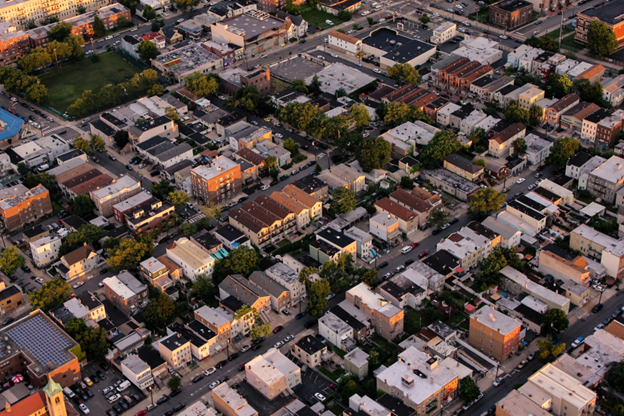Mistakes to Avoid When Buying an Old House in New York
The charm of a historic Brooklyn brownstone or a quirky Queens bungalow can be undeniable. But the allure of character and potential shouldn’t overshadow the realities of owning an older home, especially in a demanding market like New York’s.
While these properties offer an opportunity to own a piece of history, hidden problems can quickly turn your dream home into a money pit. To avoid such pitfalls, here are some key mistakes to steer clear of when buying an old house in New York.
Skipping the Inspection
A comprehensive home inspection is crucial for any property purchase, but especially for older homes. A qualified inspector can uncover a wide range of potential issues, from structural problems like foundation cracks to outdated electrical wiring.
Factor in the cost of the inspection upfront – it’s a small price to pay for peace of mind and potentially valuable negotiation leverage. Bankrate states that home inspections in New York City typically cost about $450. Of course, the size and age of the home plays a big part in determining the exact cost.
Don’t be afraid to ask the inspector for detailed explanations of any problems they find, and be sure to get everything in writing.
Underestimating Mold Risks
Mold is a common problem in older homes, particularly those with damp basements or leaky roofs. Mold exposure can lead to a variety of health problems, so it’s important to have the property tested by a certified mold inspector.
According to Crown Mold Specialists, you should be aware that some inspectors may only offer a visual inspection, which may miss hidden problems. Request a more comprehensive inspection that includes air sampling to get a complete picture of potential mold issues. Mold remediation can be expensive, so factor in the potential costs of abatement if mold is found.
Forbes states that the cost of mold removal increases with the size of the house. Expect to pay around $2,500 for a 1,000 sq ft house and $5,000 for a 2,000 sq ft house. For a 5,000 sq ft house, you might have to pay as much as a whopping $12,500.
Mold is a much more common problem in older homes throughout New York City, and Brooklyn is no exception. The borough’s historic brownstones and pre-war apartments, while undeniably charming, are particularly susceptible to mold growth due to several factors. Age and construction materials play a big role.
Many Brooklyn homes were built with porous materials like brick and plaster, which can trap moisture and create a breeding ground for mold. Plumbing issues like leaking pipes or poor drainage in basements and bathrooms can also introduce excess moisture, leading to mold growth. Finally, older homes often have inadequate ventilation, which can trap humid air inside and contribute to mold problems.
Mold Inspection in Brooklyn
Given the prevalence of mold in older Brooklyn homes, a thorough mold inspection in Brooklyn is a crucial step in the buying process. There are several reasons for this. The EPA notes that mold exposure can lead to a variety of health problems, including respiratory problems, skin irritation, and allergic reactions.
A mold inspection can identify any potential mold issues before you purchase the property, protecting your health from the outset. Additionally, if a mold inspection reveals mold growth, you can use this information to your advantage. You can negotiate a lower purchase price or request that the seller address the mold problem before closing. This can save you a significant amount of money.
A Brooklyn mold inspection gives your new digs a thumbs up, turning your dream home into a launchpad for Brooklyn adventures.
Ignoring the Heating System
New York winters can be brutal, so a reliable heating system is non-negotiable. Factor in the age and efficiency of the furnace or boiler during your inspection. Older systems can be expensive to operate and may require frequent repairs.
Consider budgeting for potential upgrades or replacements, especially if the existing system is nearing the end of its lifespan. Look into energy-efficient options that can save you money on heating costs in the long run. Carbon Switch states that switching to a modern, energy-efficient heating system like a heat pump could save you up to $500 annually.
Forgetting About Asbestos
Asbestos, a hazardous material commonly used in construction before the 1970s, can pose serious health risks if disturbed. While a full asbestos inspection can be costly, it’s crucial if the house was built before 1978. According to HomeGuide, the typical asbestos inspection can cost anywhere from $250 to $850 on average.
Factor in potential abatement costs if asbestos is found, and be wary of sellers who try to downplay the risks. Asbestos abatement is a regulated process that requires certified professionals, so be sure to get quotes from reputable companies before making an offer.
Neglecting Property Taxes and Maintenance Costs
New York City property taxes are notoriously high, and older homes often require more regular maintenance than newer builds. Research the property tax rate for the neighborhood you’re interested in, and factor those costs into your budget.
Additionally, set aside a healthy contingency fund for unexpected repairs and upkeep. Owning an older home is an ongoing commitment, so be sure you’re financially prepared for the long haul. Consider budgeting for preventative maintenance tasks, like annual furnace cleanings and roof inspections, to help avoid costly repairs down the road.
FAQs
What is the most serious warning sign during a house inspection?
The most serious red flags in a home inspection are usually foundation-related issues. Cracks in the foundation may signal structural instability, resulting in costly repairs and significant safety risks.
Is it safe to live in a house that has mold?
Mold can be present in a home, but its severity determines whether you can live there. Small mold patches can often be remediated, but substantial mold growth, particularly black mold, presents major health hazards.
How common is asbestos in NYC?
Asbestos was a common building material in NYC before the 1970s. While not inherently dangerous if undisturbed, it can cause serious health problems if inhaled during renovations or repairs. An asbestos inspection is crucial for pre-1978 NYC homes.
In conclusion, owning an older home in New York City requires a keen eye and a well-stocked wallet. While inspections may seem costly upfront, they can unearth hidden problems that would cripple your finances later. Budgeting for potential mold removal, heating upgrades, and asbestos abatement alongside the purchase price ensures a realistic starting point.
Remember, the romanticism of an old Brooklyn brownstone shouldn’t obscure the responsibility of ongoing maintenance and property taxes. With awareness and financial preparedness, you can transform your dream of owning a piece of history into a reality.


